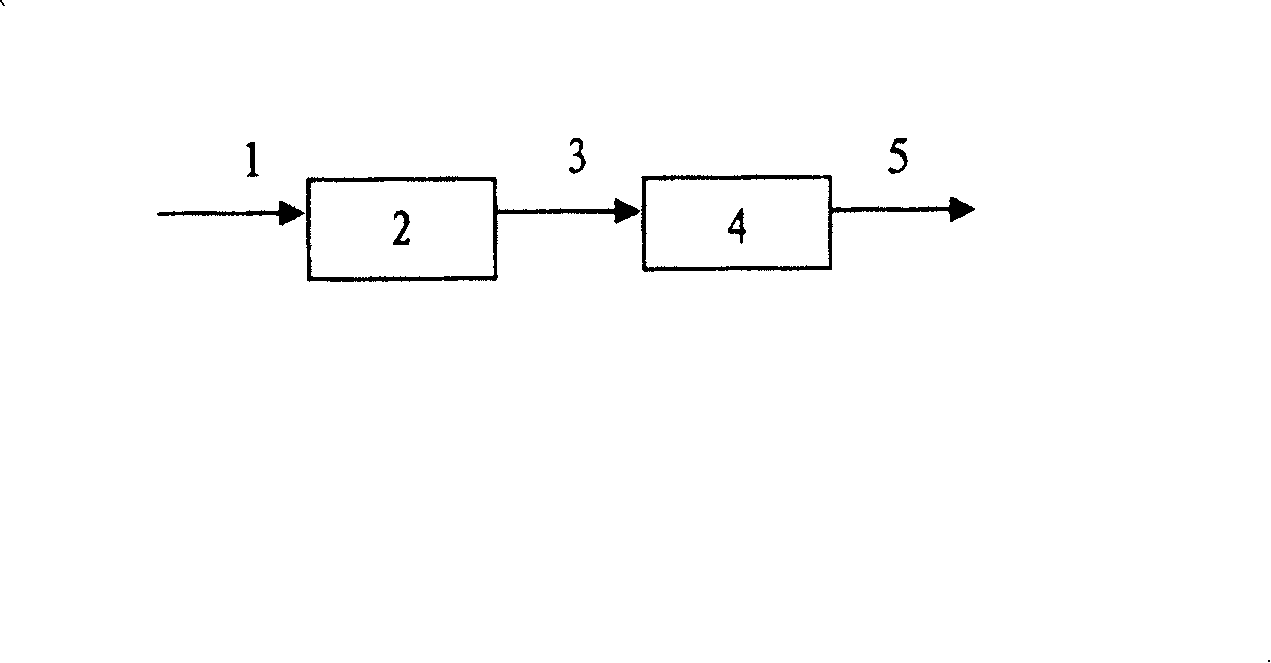Anaerobic active sludge process
An activated sludge, sequencing batch technology, applied in the direction of aerobic and anaerobic process treatment, can solve the problems of difficult biochemical advantages, the potential of Methanothrix cannot be fully utilized, and unstable ecosystems.
- Summary
- Abstract
- Description
- Claims
- Application Information
AI Technical Summary
Problems solved by technology
Method used
Image
Examples
Embodiment approach 1
[0025] Inoculation sludge is inoculated with digested sludge from urban sewage treatment plants.
[0026] The reactor in section A operates at medium temperature (30-35°C); the adsorption time is 10-15 minutes; the biogas (biogas) produced by itself is used for intermittent stirring; the reactor in section A is maintained at a high concentration of acetic acid, and the organic load of the influent is about 5.0~ 7.5g / L·d; trace metal elements have an activation effect on Methanosarcina bacteria, the trace elements Fe, Co, Ni are directly added to the reactor, and the dosage of trace elements is: Fe adopts 1mg / L·d ; Co adopts 0.1mg / L·d; Ni adopts 0.2mg / L·d. The ratio of reactor height to diameter is 5.
[0027] The B-stage reactor operates at medium temperature (30-35°C); the biodegradation time is 6h-8h; the biogas (biogas) generated by the A-stage reaction is used for intermittent stirring; the load of the B-stage reactor is kept below 5g / L·d, Make it run at low acetic acid ...
Embodiment approach 2
[0029] Inoculation sludge is inoculated with digested sludge from urban sewage treatment plants.
[0030] The reactor in section A operates at medium temperature (30-35°C); the adsorption time is 10-20 minutes; the biogas (biogas) produced by itself is used for intermittent stirring; the reactor in section A is maintained at a high concentration of acetic acid, and the organic load of the influent is 7.5~ Between 10.0g / L·d; trace metal elements have an activation effect on Methanosarcina bacteria, and the trace elements Fe, Co, Ni are directly added to the reactor, and the trace element dosage is: Fe adopts 1mg / L d; 0.1 mg / L d for Co; 0.2 mg / L d for Ni. The ratio of reactor height to diameter is 6.
[0031] The B-stage reactor operates at medium temperature (30-35°C); the biodegradation time is 8h-12h; the biogas (methane) generated by the A-stage reaction is used for intermittent stirring; the load of the B-stage reactor is kept below 5g / L·d, Make it run at low acetic acid ...
Embodiment approach 3
[0033] Inoculation sludge is inoculated with digested sludge from urban sewage treatment plants.
[0034] The reactor in section A operates at medium temperature (30-35°C); the adsorption time is 15-30 minutes; the biogas (biogas) produced by itself is used for intermittent stirring; the reactor in section A is maintained at a high concentration of acetic acid, and the organic load of the influent is 10.0~ Between 12.0g / L·d; trace metal elements have an activation effect on Methanosarcina bacteria, and the trace elements Fe, Co, and Ni are directly added to the reactor, and the trace element dosage is: Fe is 1mg / L d; 0.1 mg / L d for Co; 0.2 mg / L d for Ni. The ratio of reactor height to diameter is 5.5.
[0035] The B-stage reactor operates at medium temperature (30-35°C); the biodegradation time is 12h-24h; the biogas (biogas) generated by the A-stage reaction is used for intermittent stirring; the load of the B-stage reactor is kept below 5g / L·d, Make it run at low acetic ac...
PUM
 Login to View More
Login to View More Abstract
Description
Claims
Application Information
 Login to View More
Login to View More - R&D
- Intellectual Property
- Life Sciences
- Materials
- Tech Scout
- Unparalleled Data Quality
- Higher Quality Content
- 60% Fewer Hallucinations
Browse by: Latest US Patents, China's latest patents, Technical Efficacy Thesaurus, Application Domain, Technology Topic, Popular Technical Reports.
© 2025 PatSnap. All rights reserved.Legal|Privacy policy|Modern Slavery Act Transparency Statement|Sitemap|About US| Contact US: help@patsnap.com

